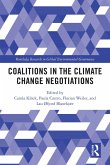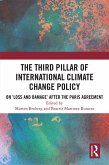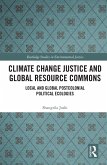Over the course of three parts, this book maps out and takes stock of patterns of cooperation in the climate change negotiations since their inception in 1995. In Part I, the authors focus on the evolution of coalitions over time, examining why these emerged and how they function. Part II drills deeper into a set of coalitions, particularly "new" political groups that have emerged in the last rounds of negotiations around the Copenhagen Accord and the Paris Agreement. Finally, Part III explores common themes and open questions in coalition research, and provides a comprehensive overview of coalitions in the climate change negotiations.
By taking a broad approach to the study of coalitions in the climate change negotiations, this volume is an essential reference source for researchers, students, and negotiators with an interest in the dynamics of climate negotiations.
Dieser Download kann aus rechtlichen Gründen nur mit Rechnungsadresse in A, B, BG, CY, CZ, D, DK, EW, E, FIN, F, GR, HR, H, IRL, I, LT, L, LR, M, NL, PL, P, R, S, SLO, SK ausgeliefert werden.
"Coalitions are a pervasive feature of multilateralism. States use them to increase their bargaining power and reduce the complexity of international negotiations, and, yet, we know surprisingly little of them. This volume fills this gap, by providing a rich collection of in-depth case studies and conceptual work on coalition formation, maintenance, and effectiveness in the international climate change regime. It is an essential read for scholars and students of international relations interested in the role of coalitions in the international climate change regime and beyond." -- Stefan Aykut, University of Hamburg, Germany
"There has been a major gap in the academic literature on the role, formation and operation of coalitions in multilateral negotiations. This volume responds to this research gap by examining coalition dynamics in the climate regime. The complex economic and environmental nature of the climate regime has led to the development of a plethora of shifting coalitions that shape and are shaped by the negotiating dynamics, whether negotiating the Paris Agreement itself of the Paris Rulebook or the second commitment period of the Kyoto Protocol. This volume not only analyzes the different and overlapping coalitions in the climate regime, but it also expands the literature on coalitions and their role in multilateral negotiations." -- Pam Chasek, Manhattan College, USA









